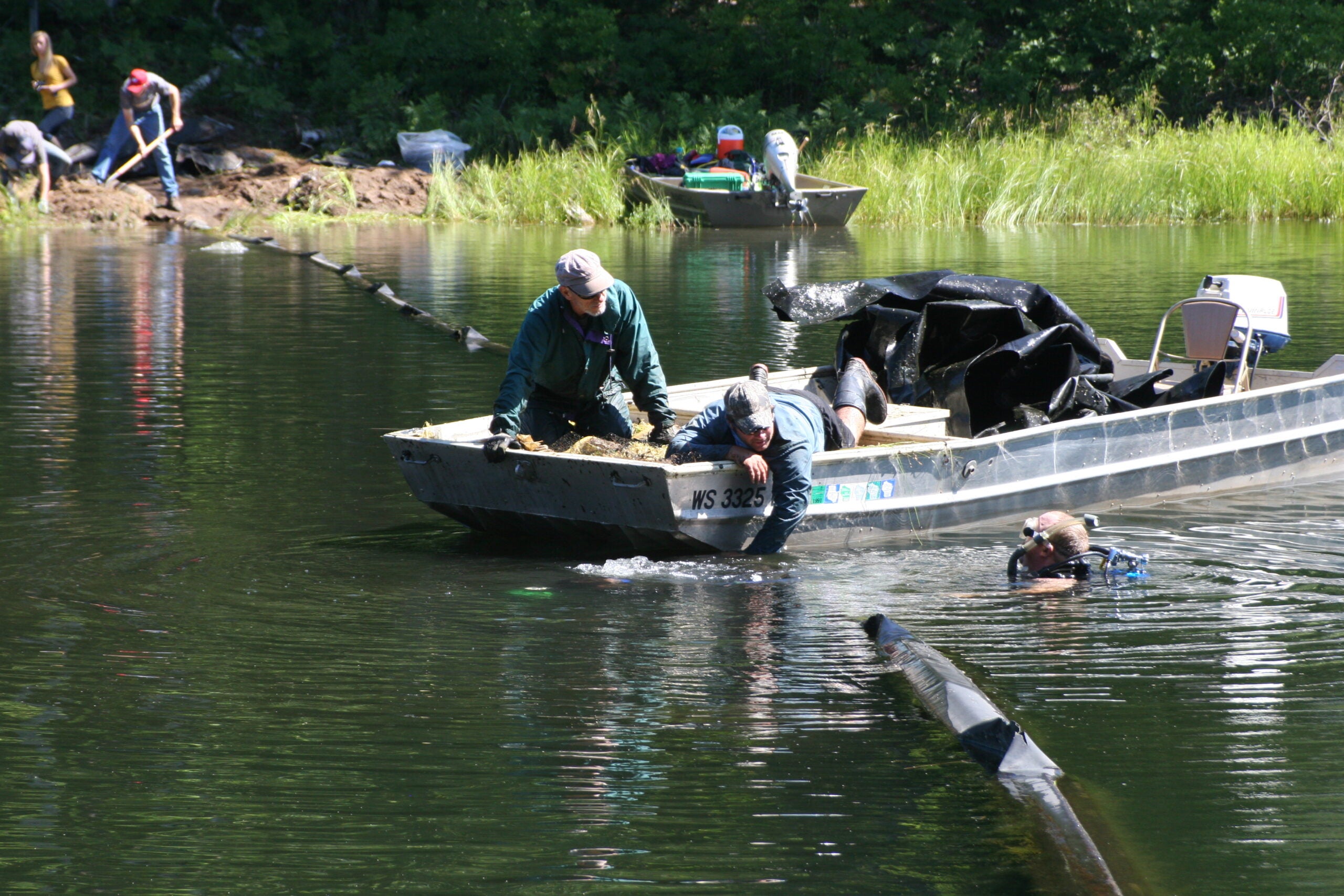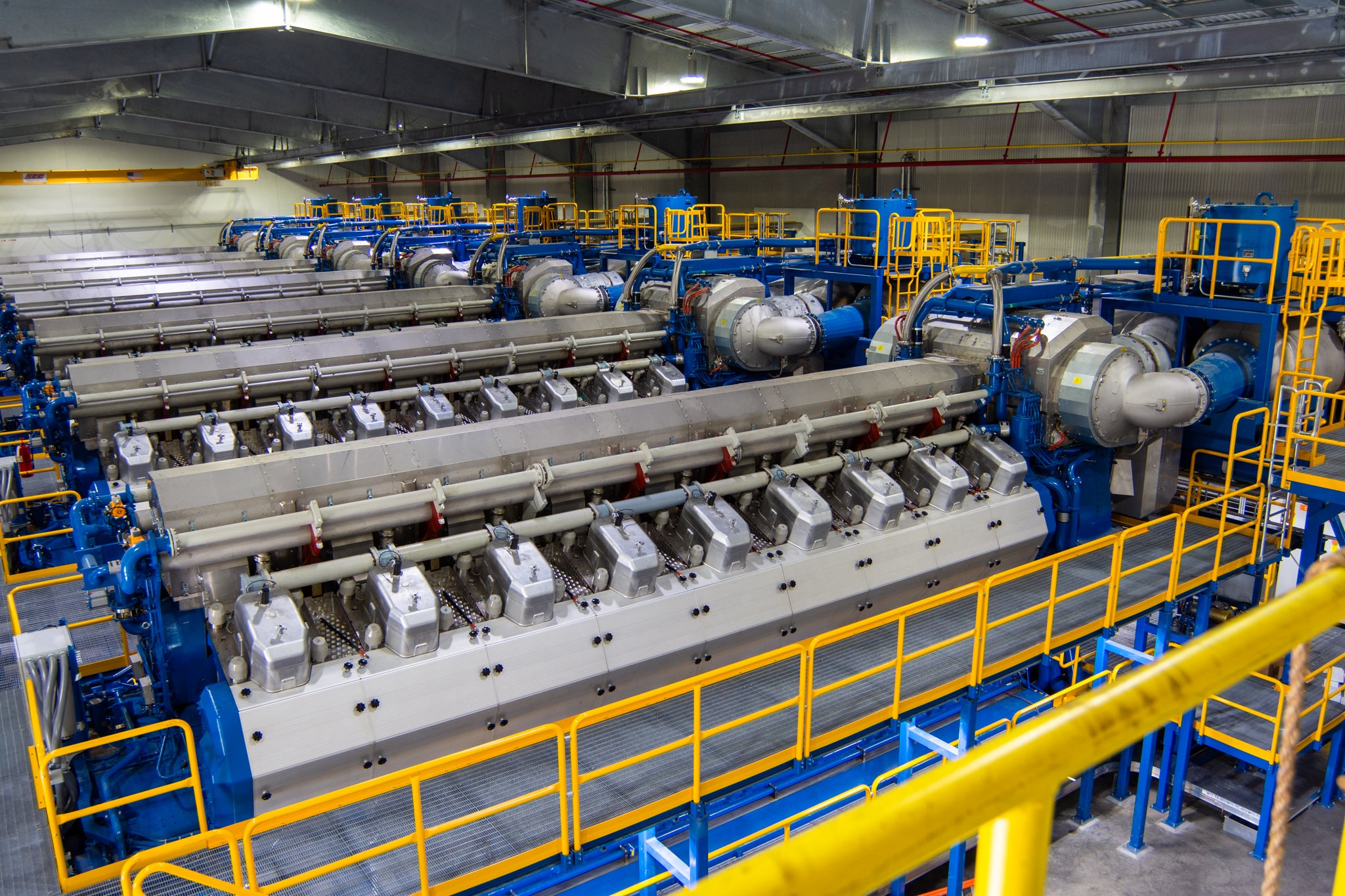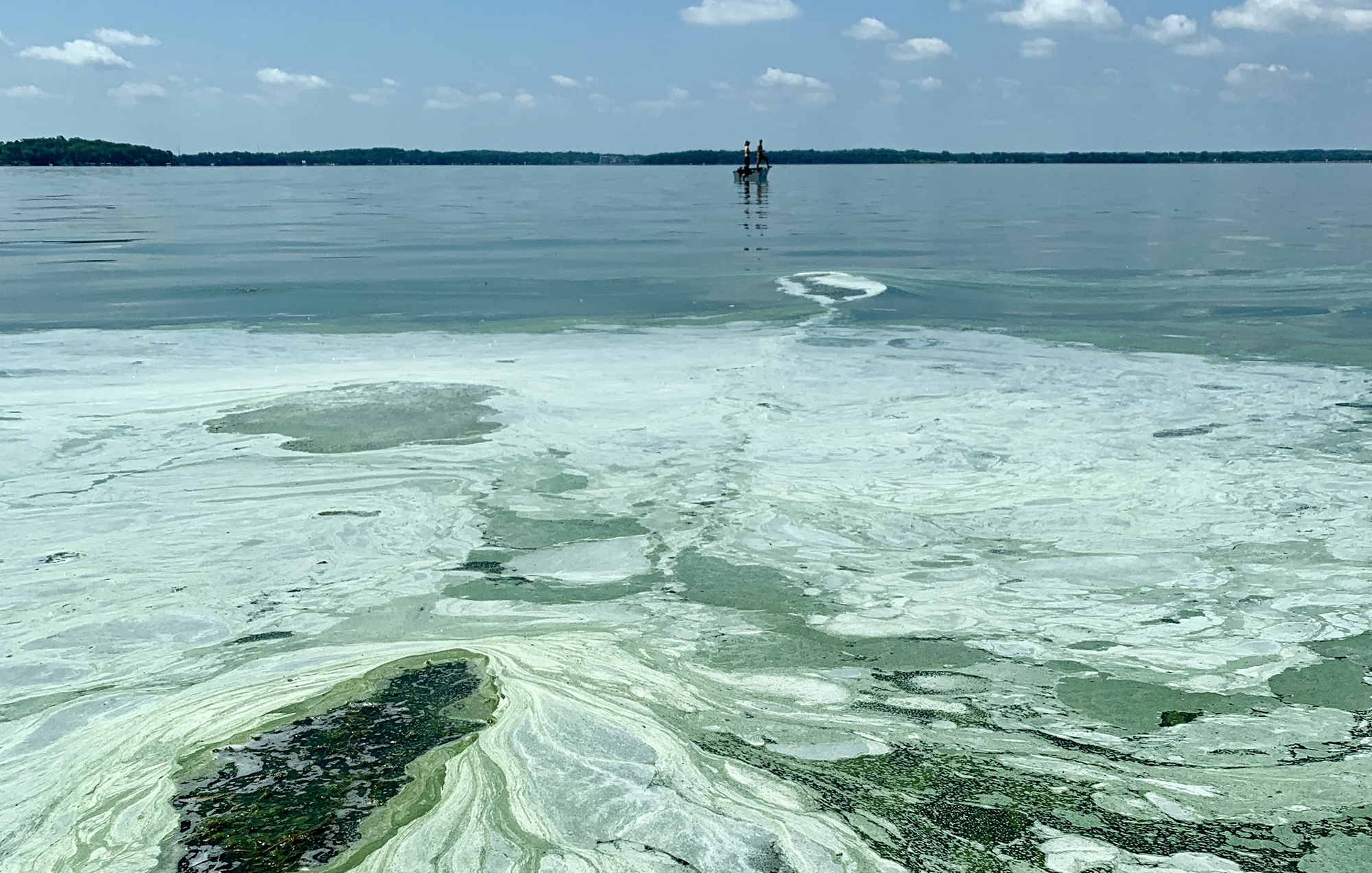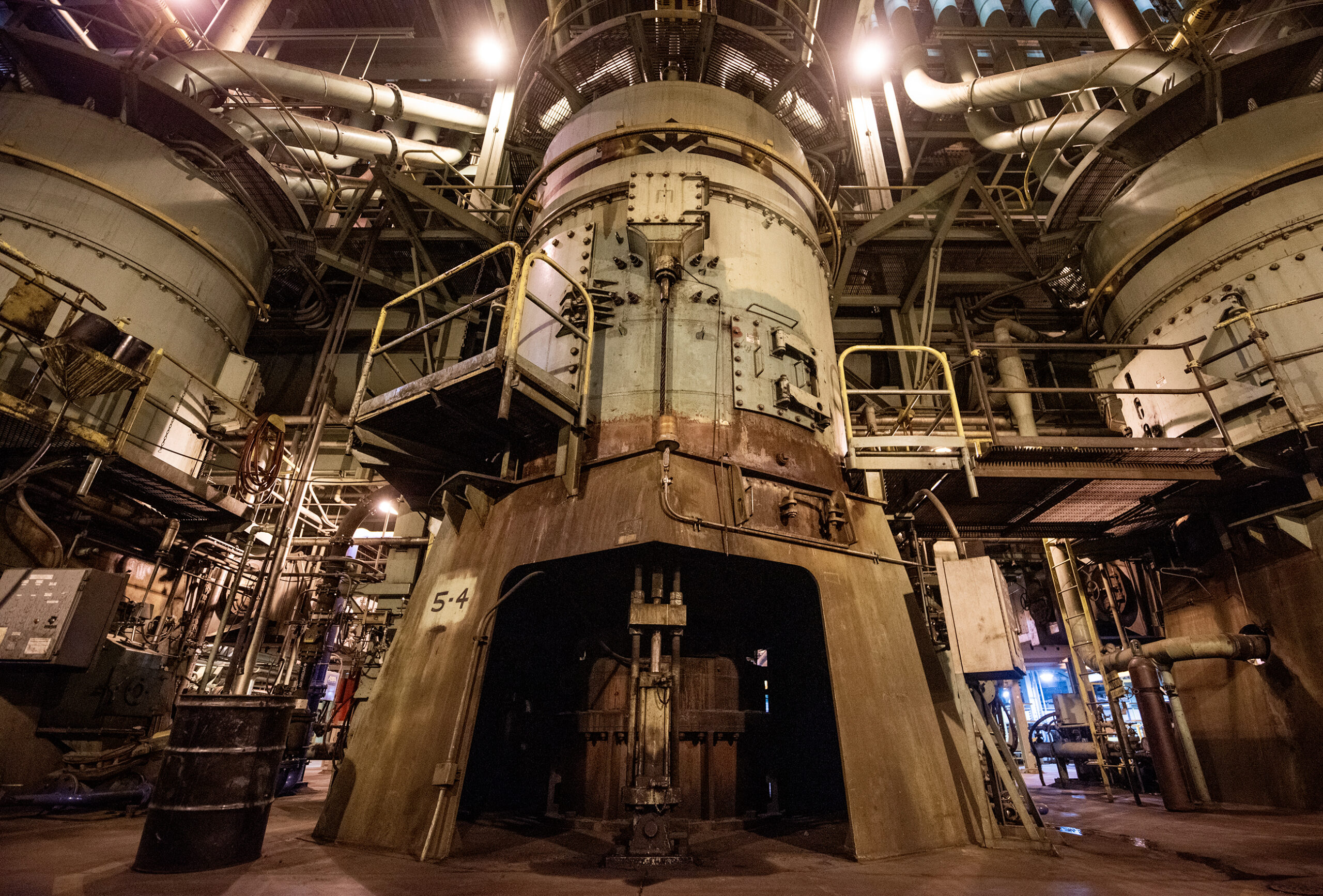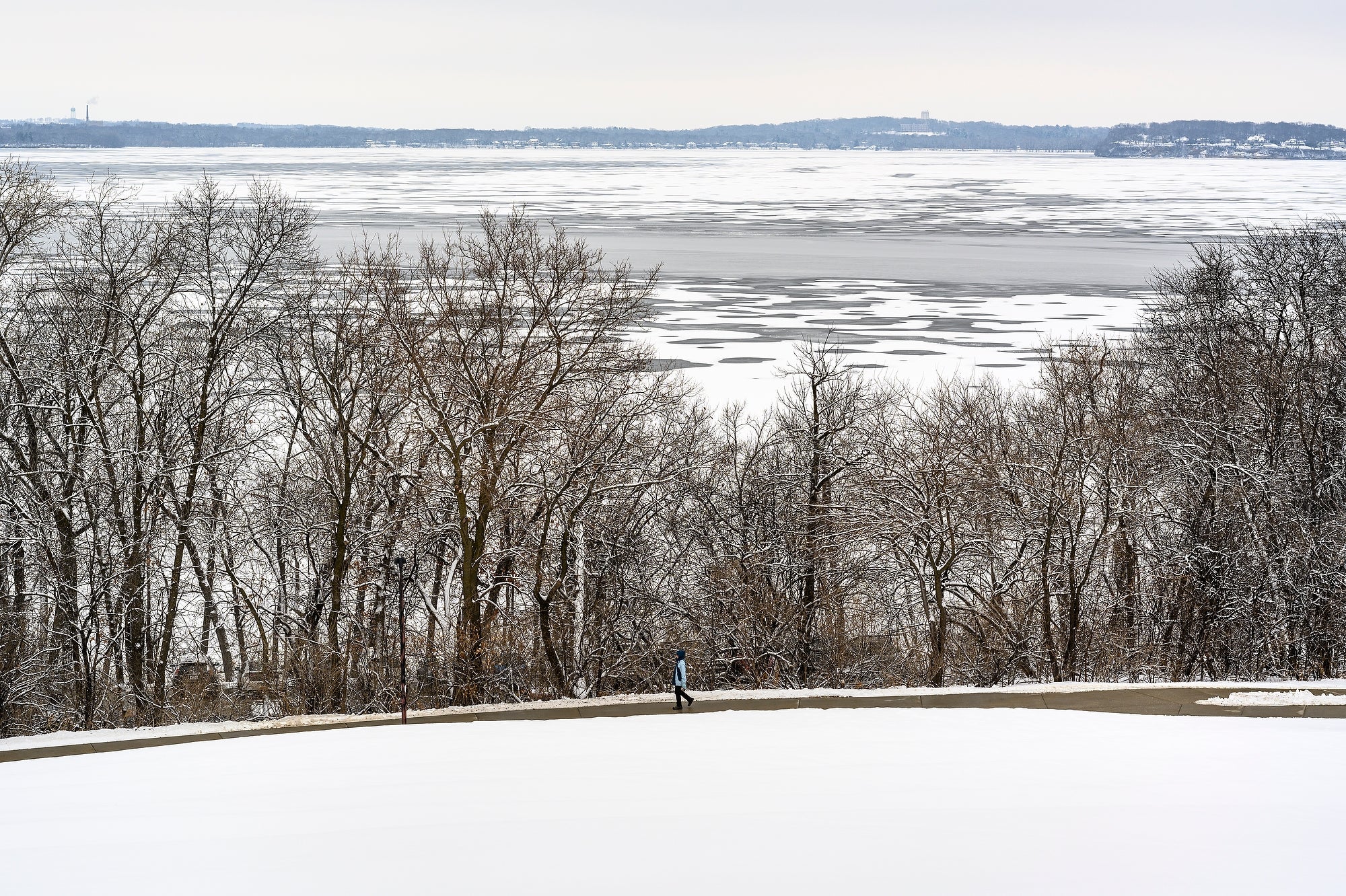Researchers have wrapped up a 30-year study of the effects of air and water pollution on Little Rock Lake, north of Minocqua.
The experiment involved dividing the lake into two halves: one clean and one dirty.
Little Rock Lake is back to normal, now, after scientists and scuba divers removed a thick plastic curtain that has divided the lake into two halves since 1984.
Stay informed on the latest news
Sign up for WPR’s email newsletter.
One half of the lake was left undisturbed. The other was slowly doused with acid to measure the effects of sulfur dioxide pollution from coal fired power plants. The simulated acid rain destroyed the native fish population, according to research scientist Carl Watras, with the Wisconsin Department of Natural Resources. “The fishery basically collapsed,” Watras said. “We eventually got to a point where the bass stopped reproducing. The eggs just deteriorated on the nest.”
Watras says the acid also produced an ugly algae bloom on the bottom of the lake. “A dense mat of filamentous algae developed, sometimes a meter thick. It was like very, very fine angel hair spaghetti, but green.”
The experiment at Little Rock Lake resulted in 130 peer-reviewed scientific papers. Watras says it also led to new anti-pollution laws, both at the state and federal level. “The initial work here played into Wisconsin’s acid rain bill in 1986, [and] it played into the Clean Air Act amendments in 1990.”
Carl Watras says the new laws have been successful in cutting sulfur dioxide emissions from coal fired power plants, but planet-warming carbon dioxide is still a problem.
Wisconsin Public Radio, © Copyright 2025, Board of Regents of the University of Wisconsin System and Wisconsin Educational Communications Board.

